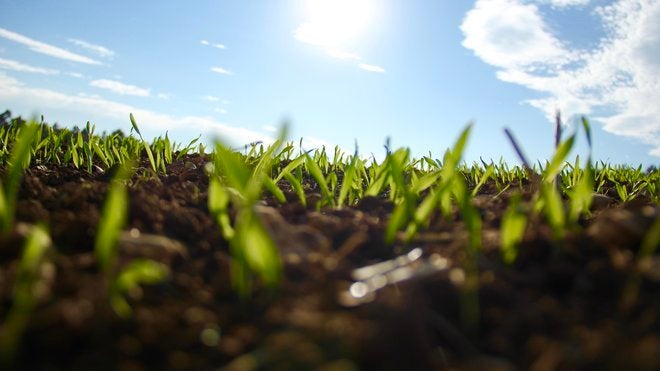Agriculture is the lifeblood of the Haitian economy, and one of the most important priorities for the new president. Millions of Haitians depend on the land, so it makes sense to examine how to expand the rural economy.

The research project Haiti Priorise is releasing new research papers on agricultural priorities. Along with a paper on agro-forestry, the research provides more data about different approaches to improve Haiti’s agriculture.
The research stems from roundtable meetings with the government, farming leaders, businesses and civil society, to identify challenges and promising solutions. It is part of a large project that asks economists to examine different investments and policies for their costs and benefits. Starting later this week, all of the research will be studied by an eminent panel of Haitian experts, as well as by a forum of young Haitians.
Researchers Professor Travis J. Lybbert of UC Davis and Abbie Turiansky of Mathematica Policy Research have studied rice production in the Artibonite Valley, where 75-80% of rice is grown.
National rice production relative to rice consumption has fallen five-fold since 1985. There are many well-known challenges, including poor infrastructure, limited access to agricultural technologies, inadequate drying, harvesting, and storage facilities, and poorly managed, inefficient marketing systems.
In 2012, an approach called “System of Rice Intensification” or SRI was introduced to some farmers in the Artibonite.
Over 2014-16, scientists closely examined the results. This has informed the researchers’ proposal.
SRI aims to update farmers’ practices. Instead of transplanting older seedlings, they are encouraged to transplant younger seedlings. Instead of randomly spacing out seedlings, they plant in a grid pattern. And they allow their fields to dry out periodically.
These initiatives represent a radical departure from traditional practices, and contradict conventional wisdom of generations of rice farmers – but if followed, they do lead to increased rice yields.
Based on the Artibonite experience, the researchers propose setting up demonstration plots along with a training program and technical support. There would need to be coordination by local irrigation user associations, and an expansion of agricultural credit so that credit unions can lend directly to farmers.
The intervention would fund the dredging of primary irrigation canals by the ODVA, and provide financial incentives to mototiller (two-wheeled tractor) service providers, because there are too few service providers.
SRI is labor-intensive and therefore labor is the largest single cost, followed by land preparation, fertilizer, and harvesting, milling and transportation. There are costs for the scheme such as direct support to the irrigation associations for coordination and training. The total cost is around 3.9 billion gourdes, or $57 million.
For farmers with access to cheap labor, SRI generates better rice yields and profits. For other farmers, it can make less financial sense, but the researchers point out they are still likely to improve some farming practices.
The researchers suggest that overall the intervention would lead to an initial rice yield gain of 14%. On average, this means benefits of about 23,000 gourdes ($330) for each hectare each year. This sounds positive. However, costs go up as well. There are higher private costs for labor, land preparation, fertilizer and transport, and in addition substantial costs in technical support. For each hectare, costs increase by about 30,000 gourdes ($430). That is why the researchers find that the project does not ‘break even’ in terms of its investment: the overall returns to Haiti are less than what is spent.
This might seem surprising: SRI has many enthusiastic supporters. While the overall picture is not positive, SRI might make better sense for some farmers with access to especially cheap labor. It’s also worth pointing out that alternative configurations of SRI interventions might be more effective.
And some elements of SRI might make sense as stand-alone interventions. For example, ensuring that the ODVA maintains canals and drains would almost certainly have benefits higher than costs. Extending access to agricultural credit in the Artibonite Valley may similarly have important impacts.
A key to boosting Haiti’s rural economy is increasing agricultural productivity. While rice productivity is among the lowest in Latin America, yields of maize, rice, and sorghum have been declining since the 1990s.
Agricultural research and development can improve the types of crops that are grown so they are more resilient to local conditions, and identify practices that would raise yields.
While there have been sporadic attempts to set up research entities, there has been no formal, consistent investment in Haitian agricultural research and development. Foreign organizations have spent a lot on various activities with little evidence of systemic benefits.
Dr. Subir Bairagi, an agricultural economist from the International Rice Research Institute, examines the impact of spending 1.7 billion gourdes ($25 million) each year for 20 years to establish a research institution to help transfer cutting-edge agricultural technology to Haiti’s farmers.
Dr. Bairagi finds that this investment would result in approximately 210% increases in maize, 109% increases in rice, and 104% increases in sorghum yields.
The increase in supply would push down market prices for consumers, but not significantly. Nevertheless, consumption would increase. Haitians would be slightly more food secure.
The benefits vary depending on how many farmers adopt new technologies. Experience elsewhere shows that the adoption of any new agricultural technology generally takes about 15-20 years to reach the maximum level, which ranges between 50% and 70%. If 60% of farmers in Haiti adopted new practices, it would mean that every 100 gourdes spent would achieve 140 gourdes worth of good.
